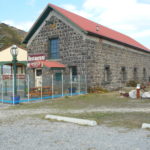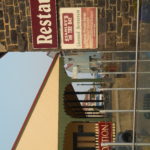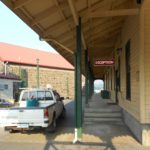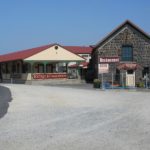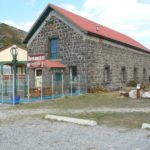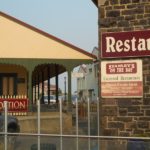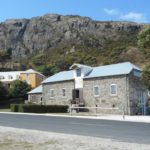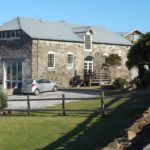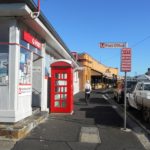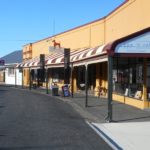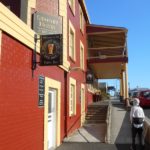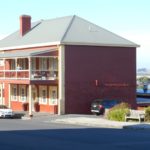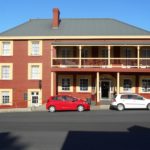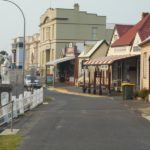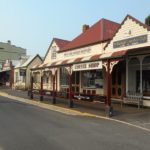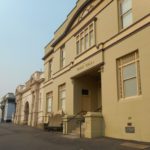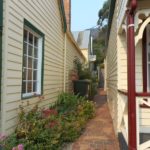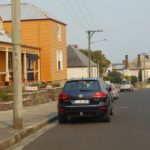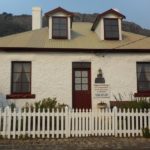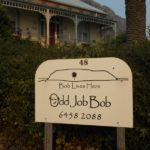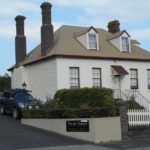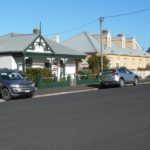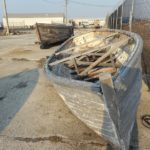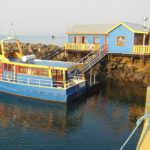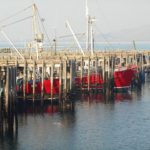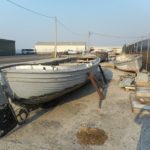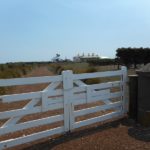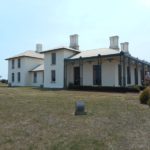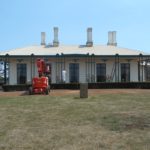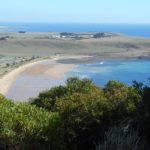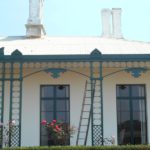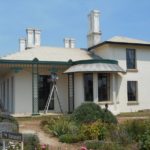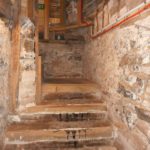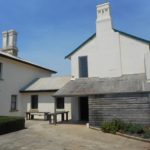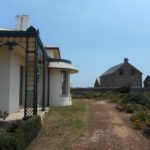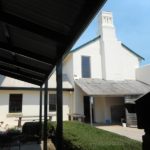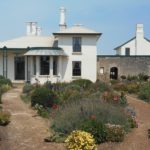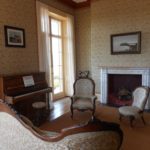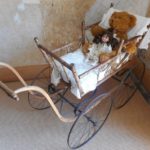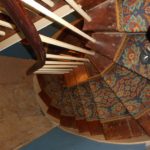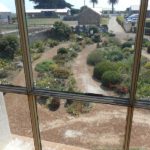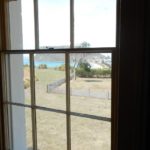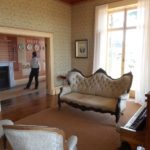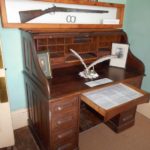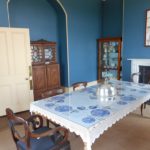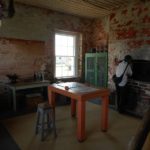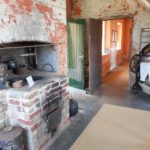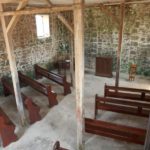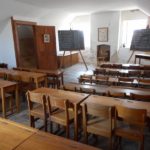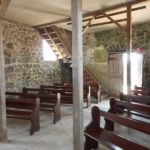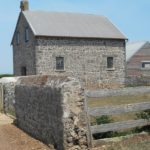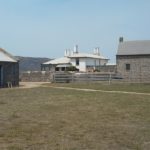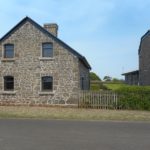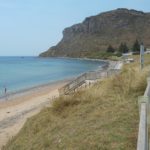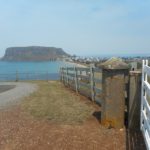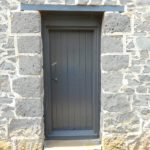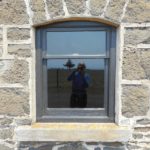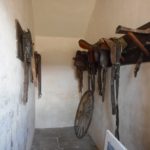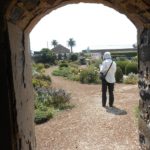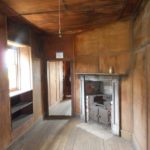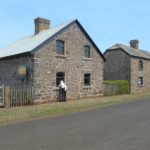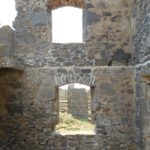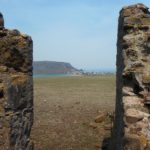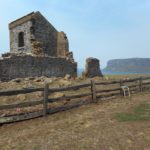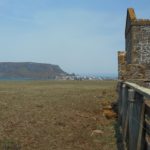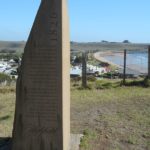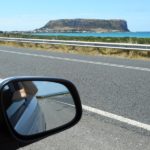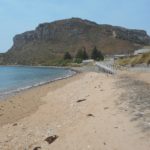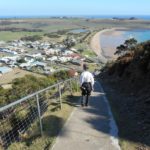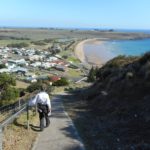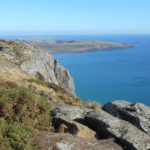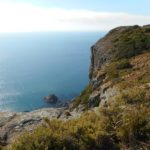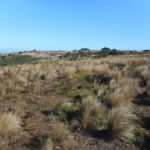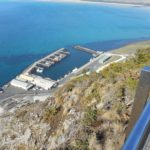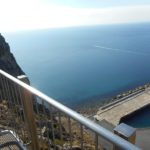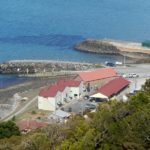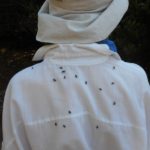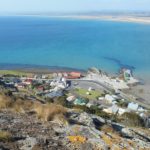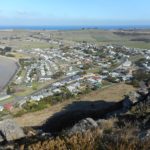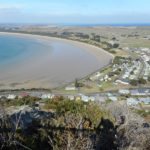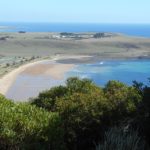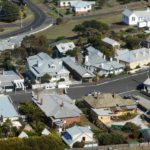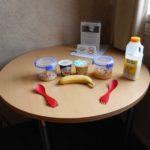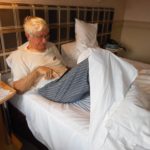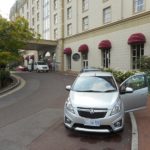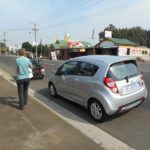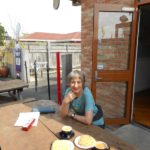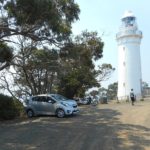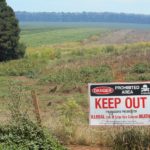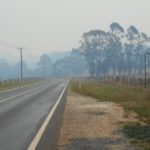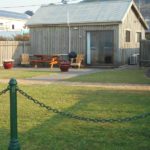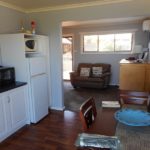For a start we had the pronunciation of Maria wrong. It is not as in the Sound Of Music: “I just met a girl named Maria”. It is as in the song “the wind they call Mariah”. The “i ‘is pronounced as in mice, not as in merino. Having got that straightened out we had a great day on Maria Island. Got the ferry from Triabunna, A$37 for ferry and A$12 for park pass. About a 45min crossing in a choppy sea.
The island was a convict punishment station from 1825 until 1832 but changes to penal policy and a number of escapes saw it closed down. It reopened as a convict probation station in 1842 and closed again in 1850. The policy of probation was punishment and reform by hard labour, religious instruction and education. At its peak it housed 500 convicts. From 1850 it has been farmed, had a Portland cement works and now a national park.
Maria Island is a remarkable place with painted cliffs, fossil cliffs,historic ruins, an abandoned village, sweeping bays, steep rugged cliffs and mountains. There are no shops or transport on the island but plenty of paths to explore by foot or mountain bike. You can stay on the island and either camp or stay in some of the historic buildings with communal kitchens and bathrooms. You have to bring in all your food though.
Like Richmond Gaol the penal buildings are remarkable as they are largely unchanged from the convict era.
On the west side of the island are the painted cliffs. These have exquisite multicoloured patterns caused by groundwater percolating through the sandstone, leaving traces of iron oxide. They can only be accessed 2 hours either side of low tide. We were lucky with our timing.
On the East side are the fossil cliffs, 230million years old containing fossilised sea creatures. In the 1920s the limestone fossils were mined and transported by tramway to a cement works near the island’s only jetty.
The island is rugged and barren where exposed to the prevailing weather with huge steep cliffs that plunge shear into the sea. The sheltered side is forested and has beautiful white sand beaches. We had a great day walking several of the “circuits” that are set out from the interpretive centre. The weather was warm but overcast with a strong wind in exposed areas.
The strong wind gave us a roller coaster trip back with the ferry being tossed around and large waves crashing right over the roof. The engines roared when the props came out of the water and there was a slightly nauseous smell of diesel. Everyone was a bit tense and the captain who had been joking with the passengers on the way over, was concentrating very hard on manoeuvring the boat. About half an hour after we got back to the resort it really bucketed down so we were lucky not to get that out on the island.

